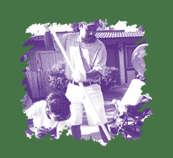








Free To Grow
Mailman School
of Public Health
Columbia University
722 West 168th Street,
8th Floor
New York, NY 10032
|
 |
 |
 |
  |
Social Reconnaissance Model
Community Assessment: General

|
The Social Reconnaissance model is a community assessment approach designed to create grass roots involvement and ownership of the community assessment and change process by community members. The approach has three components: identifying problems, identifying barriers to solving problems and identifying solutions to barriers. A variety of community stakeholders are brought together in a tightly timed series of community meetings, focus groups and citizen surveys intended to identify resources, share information and broaden engagement in a community-wide coalition . Each component of the community assessment creates greater grassroots involvement in the coalition through information sharing, collaborative planning, outreach and feedback to the community. With increased community ownership and expansion of the coalition, the community assessment process yields significant concrete results: a briefing book containing important archival data on the target communities, recommendations for programs, strategies and activities and transfer of training and other skills to community leaders and members.
(Information excerpted from the National Crime Prevention Council website, 2002, http://www.ncpc.org/ and From the Ground Up, A Workbook on Coalition Building and Community Development, Chapter 8, Second Edition, 1997, AHEC/Community Partners, http://www.tomwolff.com/healthy-communities-tools-and-resources.html)
|
 |
Tried this strategy in your community? Be the first to share your story!
|
 |
 |
|
|





















